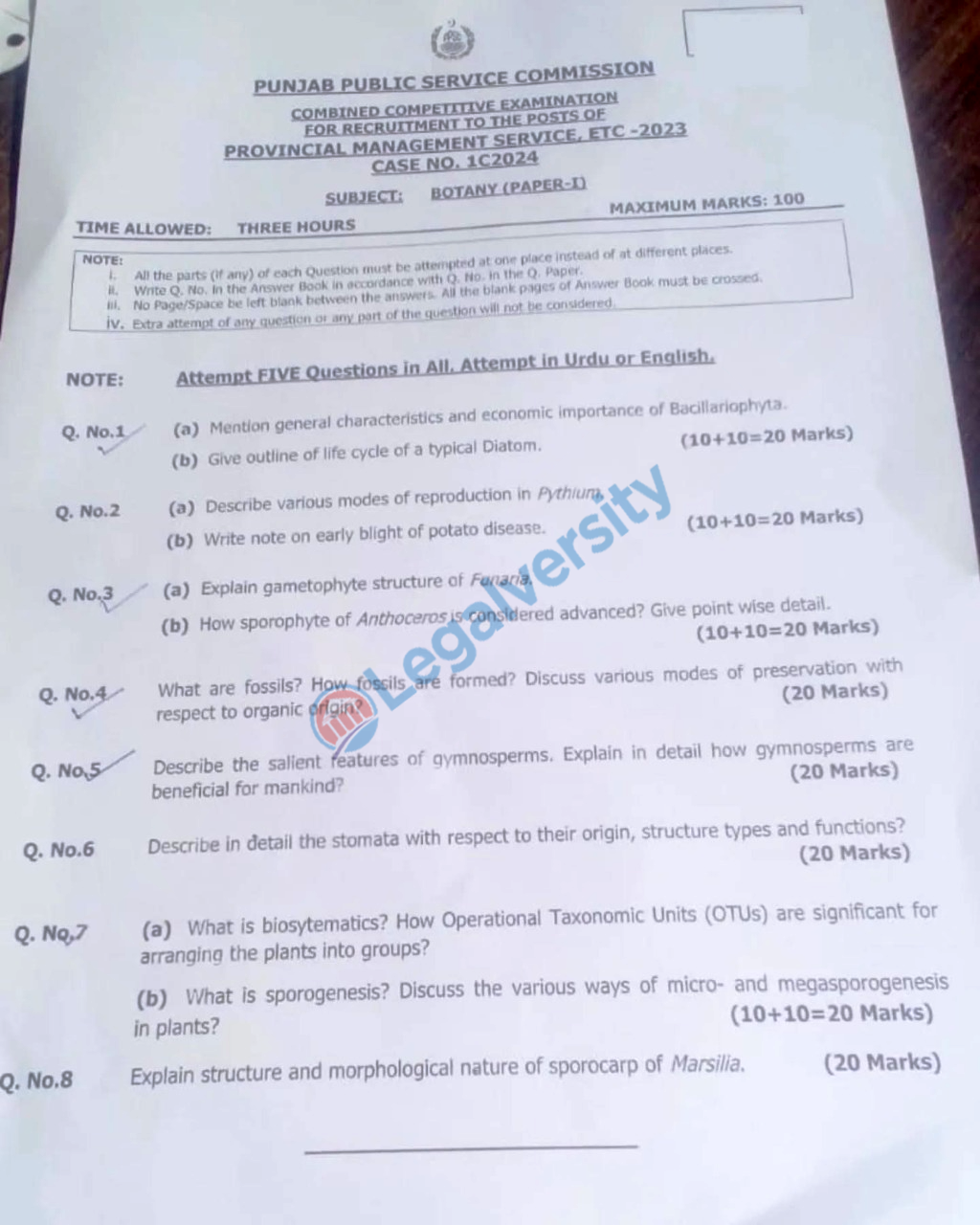Botany is an optional paper for the PMS examination. Here is the PMS Botany Paper-I for 2024. PPSC often conducts this Provincial Management Services (PMS) examination. The Paper I on Botany was held on February 02, 2025. Find its past paper below to understand what topics were given. If you are an aspirant preparing for the PMS, this Botany paper will help you better prepare. This way you can better understand the paper and the questions.
PMS Botany Paper-I 2024
Q1. a) Mention general characteristics and economic importance of Baciliarophyta.
b) Give an outline of the life cycle of a typical Diatom.
Q2. Describe the various modes of reproduction in Pythum.
b) Write a note on the early blight of potato disease.
Q3. a) Explain the gametophyte structure of Funaria.
b) How sporophyte of Anthoceros is considered advanced? Give point-wise detail.
Q4. What are fossils? How fossils are formed? Discuss various modes of preservation concerning organic origin.
Q5. Describe the salient features of gymnosperms. Explain in detail how gymnosperms are beneficial for making.
Q6. Describe in detail stomata concerning their origin, structure types, and functions.
Q7. a) What is biosystematics? How Operational Taxonomic Units (OTUs) are significant for arranging the plants into groups?
b) What is sporogenesis? Discuss the various ways of micro and megasporogenesis in plants.
Q8. Explain the structure and morphological nature of sporocarp of Marsilia.
Critical Analysis of Paper
The paper encompasses basic topics of botany by emphasizing plant classification, reproduction, and economic importance. It starts with Bacillariophyta, detailing general characteristics and its economic significance followed by an overview of the life cycle of the diatom. The reproductive modes of Pythium are explored followed by a discussion on early blight of potato disease.
The gametophyte of Funaria is discussed, as well as the advanced sporophyte of Anthoceros. Methods of fossil formation and preservation are discussed; this group of remains owes its organic origins. Gymnosperms are covered, especially noting their salient features and economic importance.
Stomata are discussed based on their origin, structural types, and functions. Biosystematics along with Operational Taxonomic Units (OTUs) in plant classification is discussed as micro- and megasporogenesis. Finally, the last segment discusses the structure and morphological nature of the Marsilia sporocarp, thereby ending the paper based on fern reproductive structures.

Also read:
